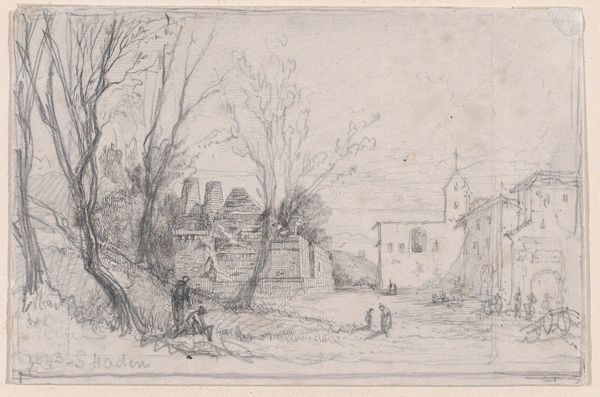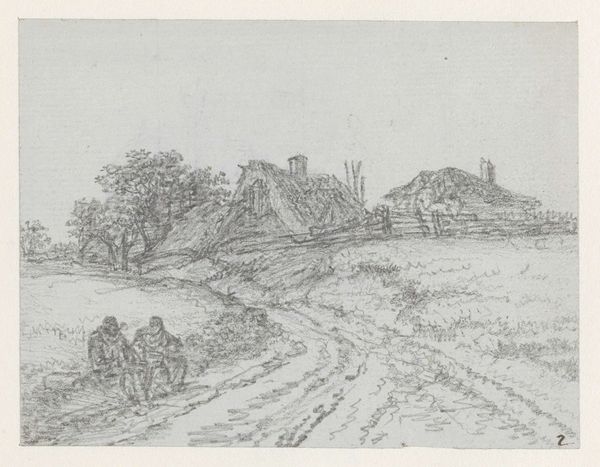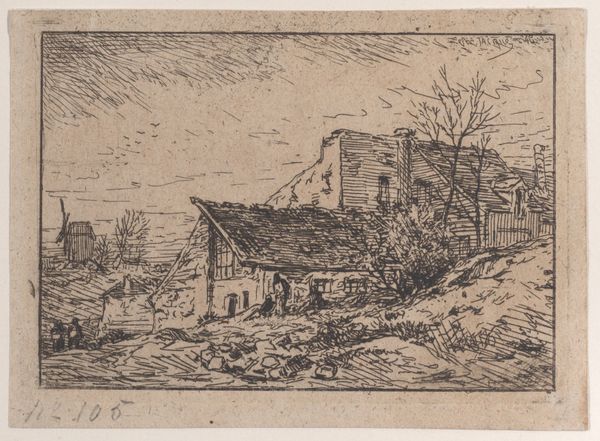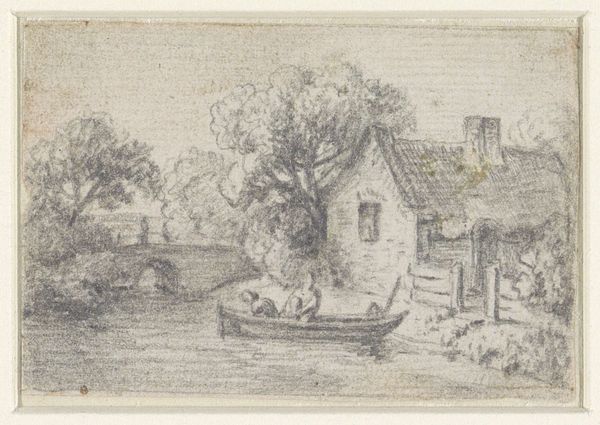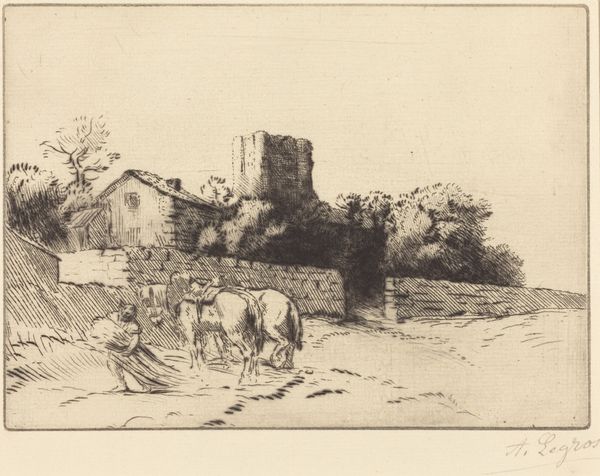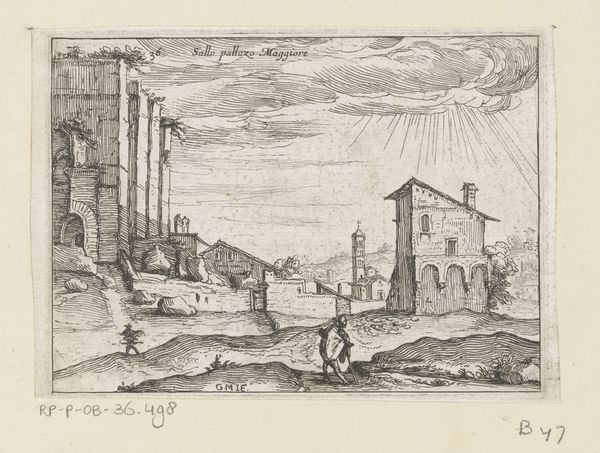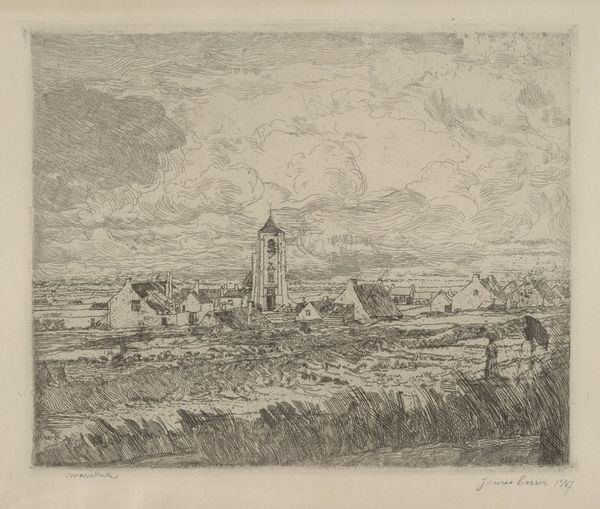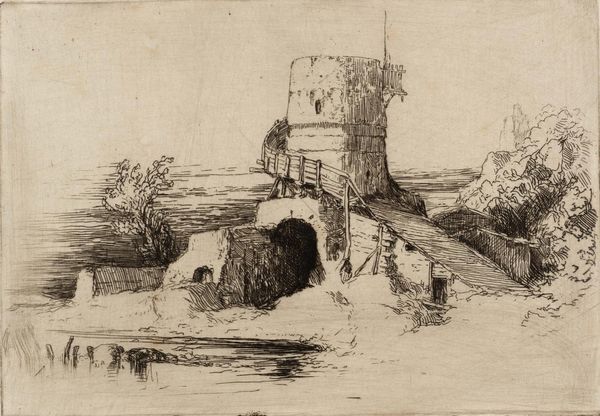
Dimensions: 110 × 198 mm (image/plate); 137 × 223 mm (sheet)
Copyright: Public Domain
Editor: So, this etching is "Fisher's House, St. Jean-de-Mont" by Auguste-Louis Lepère, made in 1892. The detail is incredible for a print. What strikes me is how this simple house seems so grounded, almost stoic, amidst that expansive sky. What do you make of it? Curator: It’s fascinating how Lepère, at a time of increasing industrialization, chose to depict such a humble scene. It makes me wonder, what was the societal value in representing the life of fishermen at the end of the 19th century? Were these images of working-class people meant to be admired, romanticized, or pitied by the art-viewing public? Editor: I hadn’t thought about that perspective. Was there a particular political climate that influenced this kind of subject matter? Curator: Absolutely. Remember the rise of Realism in art, portraying everyday life and the working class, often with socialist undertones. Images like this entered the cultural discourse alongside discussions about labor rights, poverty, and social reforms. Is Lepère simply documenting a scene or is he subtly making a statement about the dignity of labor, or perhaps the precarity of life dependent on the sea? Editor: So, even a seemingly straightforward landscape carries this socio-political weight. Curator: Exactly. And it begs the question, where was this print shown, who purchased it, and what did they see in it? Was it seen as a quaint rural scene or as something more pointed? It gives us clues to understand the intersection between art and social forces at the time. Editor: This makes me look at the print in a whole new way, understanding the artist's choices beyond the purely aesthetic. Thank you for helping me frame it within a specific historical context. Curator: It's been enlightening to reconsider this tranquil image through the lens of its potential public role.
Comments
No comments
Be the first to comment and join the conversation on the ultimate creative platform.


